
The octagonal rotunda of the Allegheny County Jail, designed by H. H. Richardson.

The octagonal rotunda of the Allegheny County Jail, designed by H. H. Richardson.

Urban legend says that these structures are chapels where the privileged can repent of their sins, but in fact they house the elevator mechanics and other rooftop necessities.

Of all the hundreds of lions on buildings downtown, the Romanesque lions that guard the county courthouse are the most distinctive. They used to be at street level, but the lowering of the Hump, the awkward hill that used to make navigating downtown even more difficult than it is now, left them stranded far above pedestrians’ heads.

In theory there is no reason to take digital pictures in black and white, since they can always be desaturated later. In practice, knowing that the picture will never have any colors in it makes one think more in terms of lines and shadows. Here are two pictures taken with a camera from the Neolithic era of digital cameras, which Father Pitt keeps set to black-and-white mode.

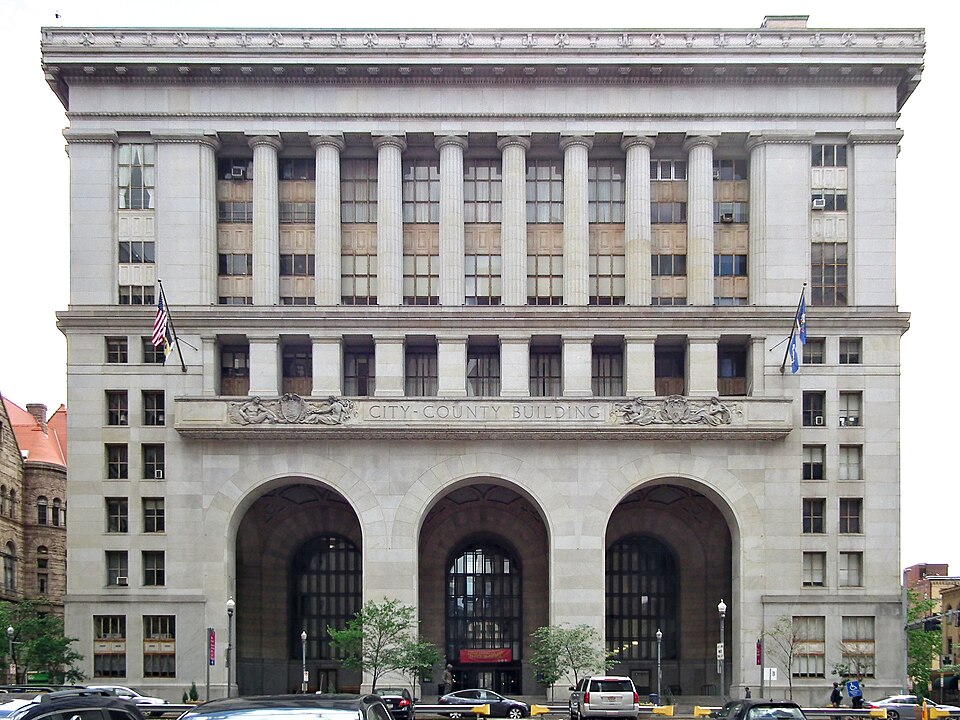
Edward B. Lee won the competition for the design of the City-County Building in “association” with Palmer & Hornbostel. Lee’s was the name in the headlines, and Lee was the only architect mentioned in the ordinance ratifying the results of the competition. But years later Lee explained that the design was Henry Hornbostel’s, with Lee just executing drawings from Hornbostel’s design. As flamboyant as he could be, Hornbostel was also generous and encouraging to his colleagues.
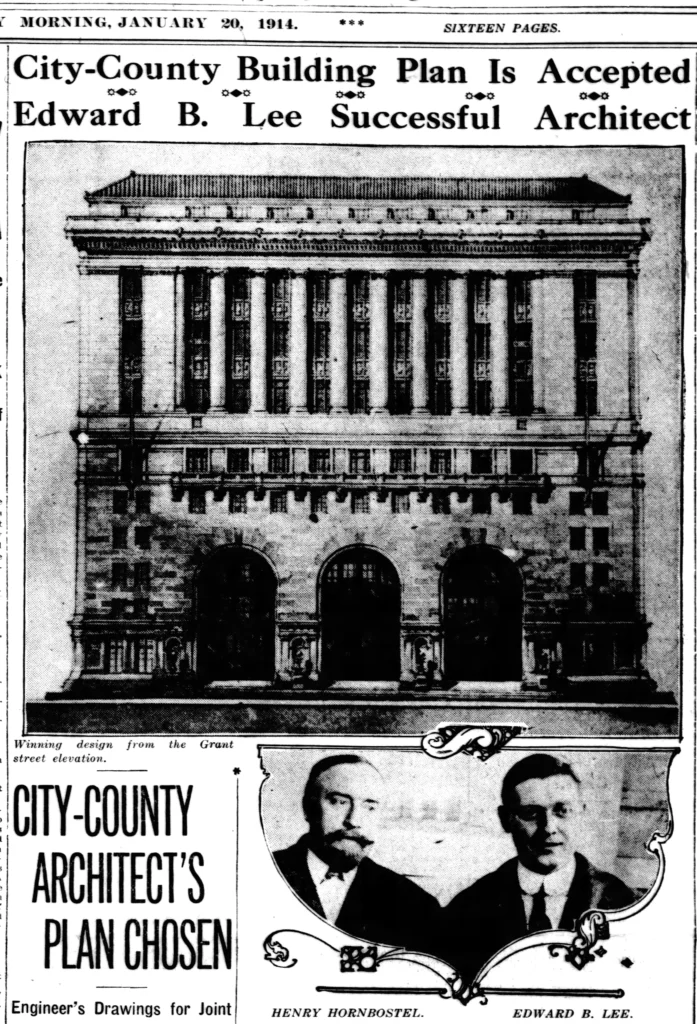
But old Pa Pitt has a suspicion that there might be more to the story than mere generosity.
In 1904, Hornbostel had won the competition for the Carnegie Tech campus, beating—among others—the famous Cass Gilbert.
In 1907, Hornbostel had won the competition for Soldiers and Sailors Hall, beating—among others—Cass Gilbert.
Now he was entering another really big competition, and the judge was Cass Gilbert, who had been selected to “prepare and conduct” the competition.1 Perhaps Hornbostel calculated that his design would have a better chance with somebody else’s name on it.
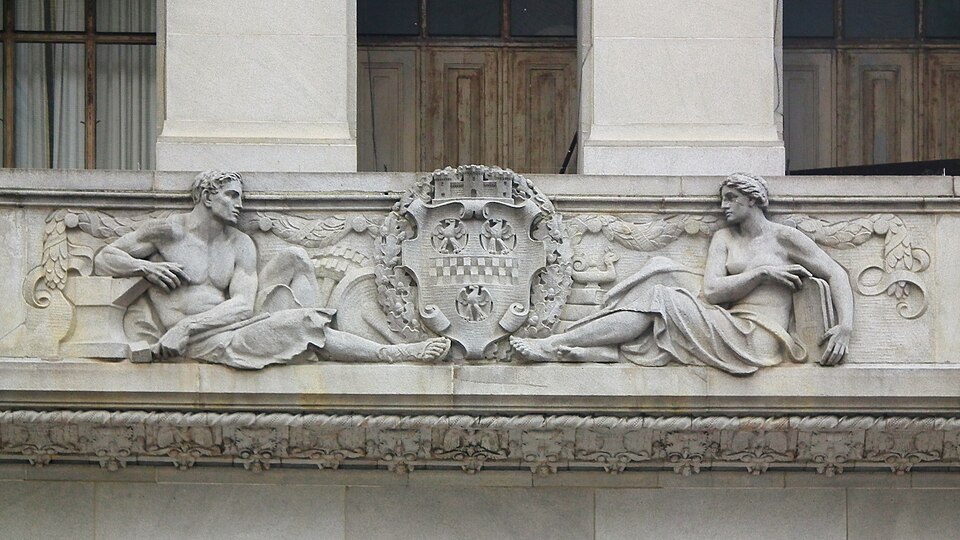
Reliefs by sculptor Charles Keck depict the arms of the City of Pittsburgh (above) and the County of Allegheny (below). Keck also contributed sculptures for Soldiers and Sailors Hall.
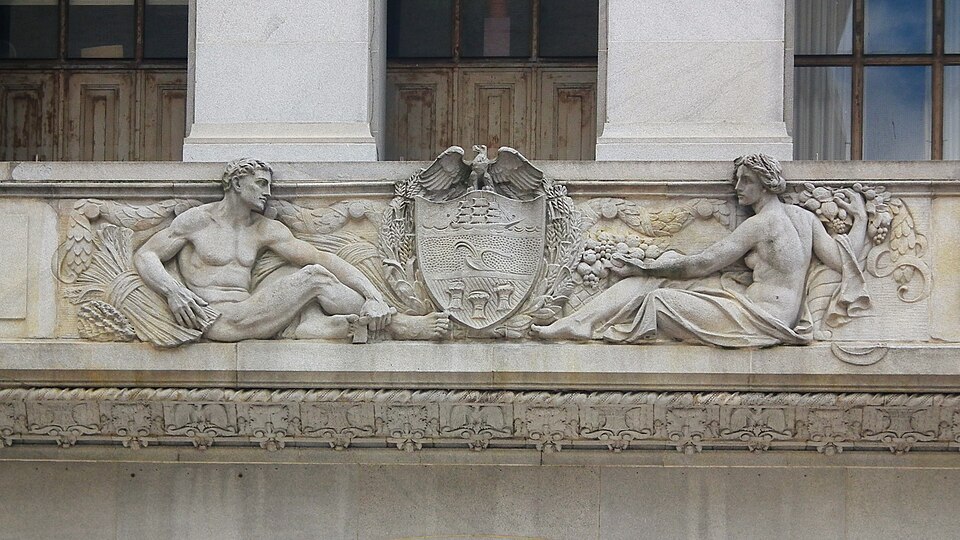
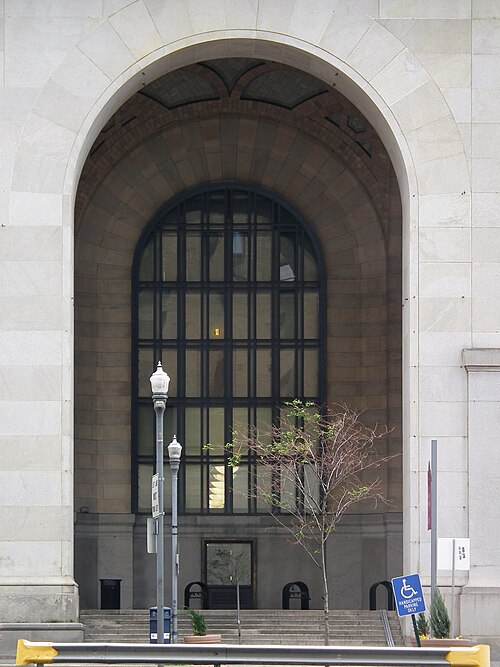
The three enormous arches are the most distinctive features of the building. Comparing the preliminary elevation above with the finished building, we can see that they were made even larger later on in the planning.

Now the Drury Plaza Hotel, this is a splendid example of the far Art Deco end of the style old Pa Pitt calls American Fascist. The original 1931 building, above, was designed by the Cleveland firm of Walker & Weeks, with Hornbostel & Wood as “consulting architects.” It is never clear in the career of Henry Hornbostel how far his “consulting” went: on the City-County Building, for example, “consulting” meant that Hornbostel actually came up with the design, but Edward Lee was given the credit for it; we would not know that Hornbostel drew the plans if Lee himself had not told us.
At any rate, the lively design almost seems like a rebuke to the sternly Fascist Federal Courthouse across the street, which was built at about the same time.
The aluminum sculpture and ornament is by Henry Hering.
An addition in a similar style looks cheap beside the original; perhaps it would have been better just to admit that the original could not be duplicated and to build the addition in a different style.
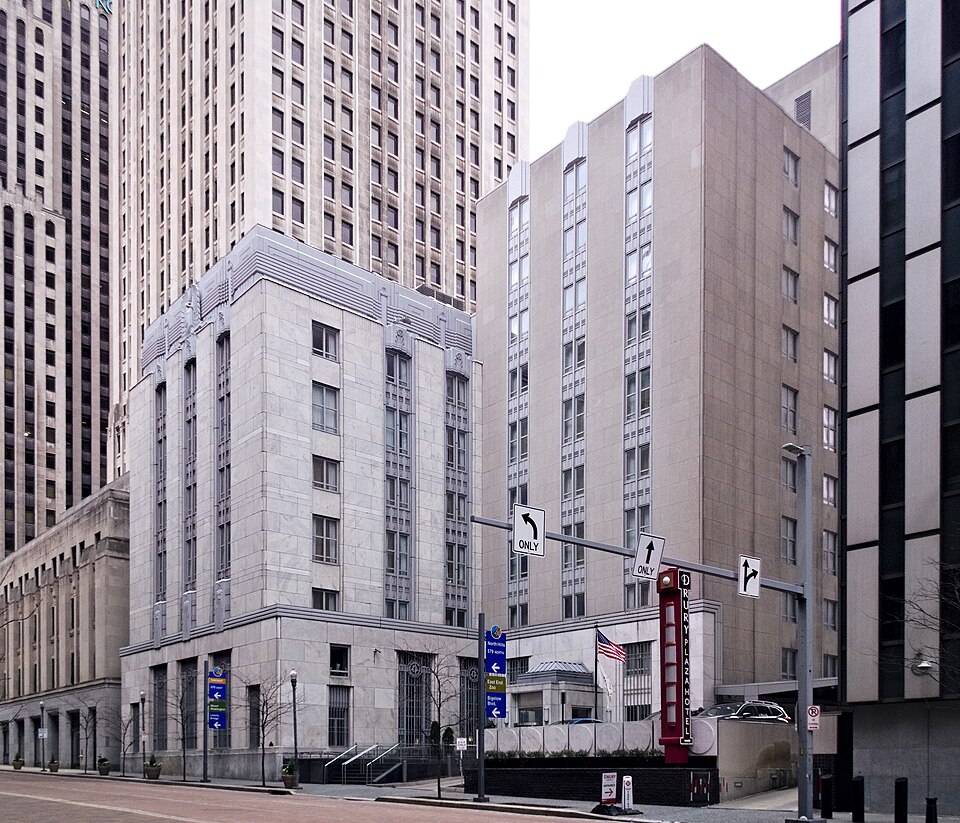

Flowering trees at Liberty Center, and views of other landmarks through the flowers.



Penn Station.

Looking up Grant Street.

The federal courthouse.


Looking down Liberty Avenue.

This is a rather grandly named bus station and parking garage. It’s certainly a striking building to look at; it was designed by IKM, descended from the grand old firm of Ingham & Boyd. There ought to be someone in the crow’s nest at the top of the tower to shout “Bus ho!” whenever a Greyhound is sighted.
